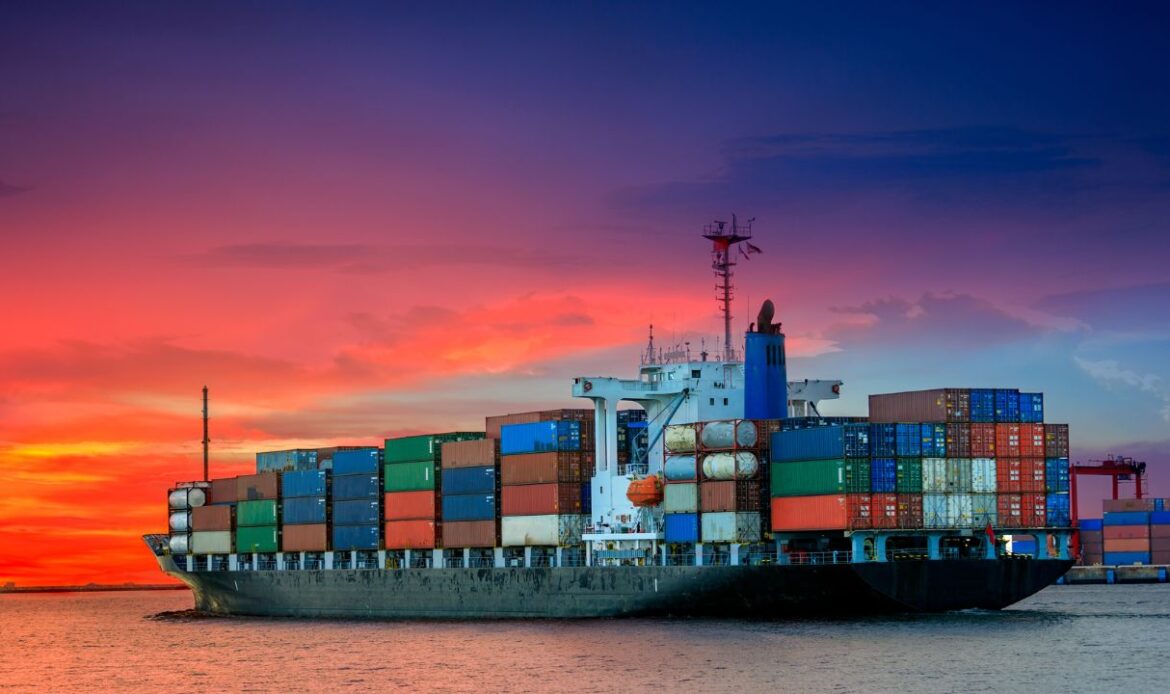
International shipping can feel like a complex puzzle, especially when it comes to managing costs. For businesses and individuals with smaller cargo volumes, the expense of booking a full container can be a significant barrier. This is where Less than Container Load, or LCL international shipping, comes in as a game-changer. By allowing you to share container space with others, LCL offers a flexible and affordable way to move your goods across the globe.
But just choosing LCL is only the first step. True savings come from understanding the process and making smart decisions along the way. This guide will walk you through practical strategies to maximize the cost-effectiveness of your next LCL shipment. We will explore everything from proper packaging to understanding pricing, helping you optimize your supply chain and reduce your overall expenses.
Understanding the Basics: What is LCL Shipping?
Before we dive into saving money, let’s quickly cover what LCL international shipping is. Imagine you need to send a few boxes or a pallet of goods overseas. You don’t have enough cargo to fill an entire 20-foot or 40-foot container. Instead of paying for all that space, you can use LCL shipping.
With an LCL shipment, your cargo is consolidated with goods from other shippers to fill a container. This process is managed by a freight forwarder or a logistics company. You only pay for the space your goods occupy in the container, not the entire unit. This shared model is what makes LCL a fantastic option for smaller shipments.
In contrast, FCL shipping, or Full Container Load, means you lease an entire container for your exclusive use. While FCL can be more economical for large volumes, LCL provides unparalleled cost efficiency for smaller quantities.
Plan to Reduce Costs
Spontaneity and last-minute decisions are the enemies of a cost-effective supply chain. When it comes to LCL international shipping, planning is your most powerful tool for saving money.
1. Book in Advance
Ocean freight rates fluctuate based on demand, season, and available capacity. Booking your LCL shipment well in advance can lock in a better rate. Last-minute bookings often come with premium charges because they require logistics providers to scramble for space. Aim to book your shipment at least a few weeks before your desired departure date, especially during peak seasons like the holidays or before major global events.
2. Be Flexible with Transit Times
Faster is not always cheaper. Express shipping services and expedited shipping options come at a higher price. If your delivery timeline is flexible, you can opt for standard transit times, which are significantly more affordable. Discuss different sailing schedules with your freight forwarder. A vessel that leaves a few days later or takes a slightly longer route might offer substantial savings. This flexibility allows you to avoid premium-priced, high-demand routes.
Optimize Your Packaging
In LCL shipping, you are billed based on the volume or weight of your cargo, whichever is greater. This is known as the “chargeable weight.” Therefore, how you pack your goods has a direct impact on your final cost.
- Compact Your Cargo: Minimize space within your boxes. Use appropriately sized cartons and consolidate items where possible. Avoid oversized packaging that adds unnecessary volume. The goal is to make your shipment as dense and compact as you can.
- Use Sturdy Materials: While you want to be compact, don’t compromise on protection. Damaged goods can lead to costly replacements, insurance claims, and unhappy customers. Use strong, high-quality boxes, crates, or pallets. Proper packaging prevents damage during handling at consolidation and deconsolidation warehouses.
- Label Everything Clearly: Each package in your LCL shipment should be clearly labeled with the consignee’s information, destination port, and handling instructions. Clear labeling helps prevent your cargo from getting lost or misplaced, avoiding potential delays and extra fees associated with locating lost items.
By optimizing your packaging, you not only reduce your chargeable volume but also protect your investment, contributing to overall cost efficiency.
Understand LCL Pricing and Quotes
LCL pricing can seem complicated because it involves multiple components. Understanding what you are paying for is essential to identifying areas where you can save. A typical LCL quote includes various charges that cover the entire journey from origin to destination.
Key Cost Components:
- Ocean Freight: This is the base cost for transporting your goods from one port to another.
- Origin Charges: These fees cover the cost of handling and consolidating your cargo at the origin warehouse. This can include chassis fees, warehouse handling, and documentation fees.
- Destination Charges: Similar to origin charges, these are fees for deconsolidating the container, warehouse handling, and processing your shipment at the destination port.
- Customs Clearance: This fee covers the process of clearing your goods through customs at the destination.
- Duties and Taxes: These are levied by the government of the destination country and are typically based on the value and type of goods.
When comparing quotes from different providers, make sure you are looking at an all-in price. Some forwarders may offer a low initial ocean freight rate but compensate with high origin or destination charges. A detailed, transparent quote is crucial for true cost comparison. Don’t hesitate to ask for a full breakdown of charges to avoid surprises.
Choose the Right Freight Partner
Choosing the right freight forwarder or logistics partner is one of the most important steps in your shipping process. A trusted partner not only handles your cargo but also guides you through the challenges of international trade. For services like LCL international shipping, they can help streamline logistics, prevent costly delays, and uncover ways to save money.
What to Look for in a Partner:
- Experience with LCL: Look for a company that specializes in LCL shipping. They will have established consolidation services and a network that can offer better rates and more reliable schedules.
- Transparent Pricing: A good partner provides clear, detailed quotes without hidden fees.
- Strong Network: A forwarder with a global network can manage your shipment smoothly from door to door, reducing the risk of delays and complications.
- Excellent Customer Service: You want a partner who is responsive and can provide you with updates and support throughout the shipping process.
Working with an experienced provider can unlock better cost-effectiveness. They can advise you on the best shipping routes, help you with documentation, and provide insights on how to prepare your cargo to minimize costs.
Q: What is the Cheapest Way to Ship Internationally, LCL or FCL?
A: LCL (Less than Container Load) is generally cheaper for smaller shipments, typically those under 15 cubic meters. With LCL, you only pay for the space your goods use inside a shared container. FCL (Full Container Load), where you pay for an entire container, becomes more cost-effective for larger shipments, as the cost per cubic meter decreases significantly.
Consolidate Your Shipments Strategically
If you are a business that ships frequently, you might be able to save money by consolidating several smaller shipments into a single, larger LCL shipment. Instead of sending out multiple small packages as they become ready, you can hold them and ship them together.
This strategy requires careful planning of your production and delivery schedules. However, the savings can be substantial. You reduce the per-shipment handling fees and often get a better rate for a larger volume. This approach enhances the cost efficiency of your entire supply chain by turning several expensive, small shipments into one more affordable load LCL.
This is different from FCL shipping, as you are still not filling a whole container, but rather optimizing your use of the LCL model.
Avoid Common Pitfalls and Extra Fees
The path of an LCL shipment is filled with potential extra charges. Being aware of them can help you avoid unnecessary costs.
- Demurrage and Detention: These fees are charged when a container is not picked up from the port or returned to the carrier within the allotted free time. While more common with a full container load (FCL), delays in clearing your LCL portion can contribute to these charges for the entire group. Ensure your documentation is for swift customs clearance.
- Incorrect Documentation: Inaccurate or incomplete paperwork is a leading cause of delays and fines in international shipping. Double-check your commercial invoice, packing list, and bill of lading. Make sure the declared value and description of goods are accurate.
- Warehouse Storage Fees: If your cargo sits at the origin or destination warehouse for too long, you will incur storage fees. Coordinate with your consignee to ensure they are ready to receive the goods promptly upon arrival.
Proactive management and clear communication with your logistics partner can help you steer clear of these costly issues, ensuring your LCL shipping experience is as smooth and economical as possible.
Conclusion
Maximizing savings with LCL international shipping is about more than just finding the lowest price. It requires a strategic approach that includes careful planning, smart packing, and a clear understanding of the entire process. By booking in advance, optimizing your cargo’s volume, and working with a trustworthy partner, you can turn LCL shipping into a highly effective and budget-friendly solution for your business. You can leverage the “only pay for the space you use” model to its full potential, making your supply chain more efficient and resilient.
Ready to take control of your shipping costs? The team at Universal Relocations has the expertise to guide you through every step of your LCL shipment, ensuring a smooth and cost-effective process.

 800-13-7356
800-13-7356
